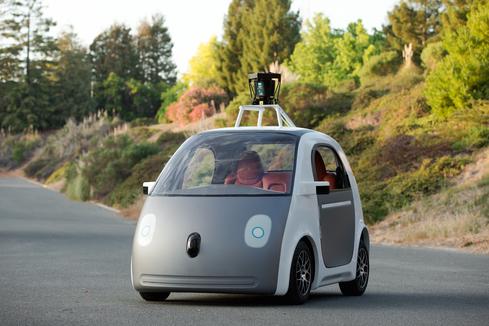NHTSA, Automakers Agree On Automatic Braking StandardsNHTSA, Automakers Agree On Automatic Braking Standards
The agreement between 20 automakers, including GM, and the NHTSA marks another step in the ongoing automation of vehicles. Set to be in place by 2022, it's a way to make self-driving vehicles safer.


Google, Tesla And Apple Race For Electric, Autonomous Vehicle Talent
Google, Tesla And Apple Race For Electric, Autonomous Vehicle Talent (Click image for larger view and slideshow.)
As tech companies and legacy auto manufacturers continue to pour time and resources into developing self-driving vehicles, security concerns continue to arise, especially when it comes to the cars' ability to safely handle adverse weather conditions.
One technology that could mitigate some of those fears are automatic emergency braking (AEB) systems, which detect an impending forward crash with another vehicle in time to avoid or mitigate the crash, and alert the driver to take corrective action to avoid the crash.
The US Department of Transportation's National Highway Traffic Safety Administration (NHTSA) and the Insurance Institute for Highway Safety (IIHS) announced a commitment by 20 automakers to make AEB a standard feature on virtually all new cars no later than NHTSA's 2022 reporting year, which begins Sept. 1, 2022.
The 20 automakers, which collectively represent more than 99% of the US auto market, include GM, Volkswagen, Audi, BMW, and Mercedes-Benz, as well as electric car manufacturer Tesla Motors.
Based on evidence that AEB effectively reduced crashes and injuries in the US and around the world, NHTSA and the IIHS, a nonprofit organization, issued a challenge to industry in September 2015 to encourage automakers to voluntarily make AEB a standard feature.
The NHTSA believes this technology represents the next wave of potential significant advances in vehicle safety that include automatic emergency braking systems, such as dynamic brake support (DBS) and crash imminent braking (CIB).
If the driver brakes, but not hard enough to avoid the crash, DBS automatically supplements the driver's braking in an effort to avoid the crash, while CIB is applied automatically if a driver does not take any action to avoid the crash.

Create a culture where technology advances truly empower your business. Attend the Leadership Track at Interop Las Vegas, May 2-6. Register now!
The NHTSA estimates that the agreement will make AEB standard on new cars three years sooner than could done through the formal regulatory process.
"IIHS member companies strongly support the adoption of effective safety technologies," Jack Salzwedel, IIHS board chairman and CEO of American Family Insurance, wrote in a March 17 statement. "Deploying AEB on a wide scale will allow us to further evaluate the technology's effectiveness and its impact on insurance losses, so that more insurers can explore offering discounts or lower premiums to consumers who choose AEB-equipped vehicles."
The commitment would make AEB standard on virtually all light-duty cars and trucks with a gross vehicle weight of 8,500 pounds or less beginning no later than Sept. 1, 2022.
In addition, AEB will be standard on virtually all trucks with a gross vehicle weight between 8,501 and 10,000 pounds beginning no later than Sept. 1, 2025.
The NHTSA and IIHS also announced that Consumer Reports would assist in monitoring automaker progress toward meeting the AEB commitment.
"We have been calling on automakers to make automatic emergency braking standard in all new vehicles, and today is an important step toward reaching that goal," Jake Fisher, director of auto testing for Consumer Reports, wrote in a statement. "This proven technology is among the most promising safety advances we've seen since electronic stability control almost two decades ago."

About the Author
You May Also Like






